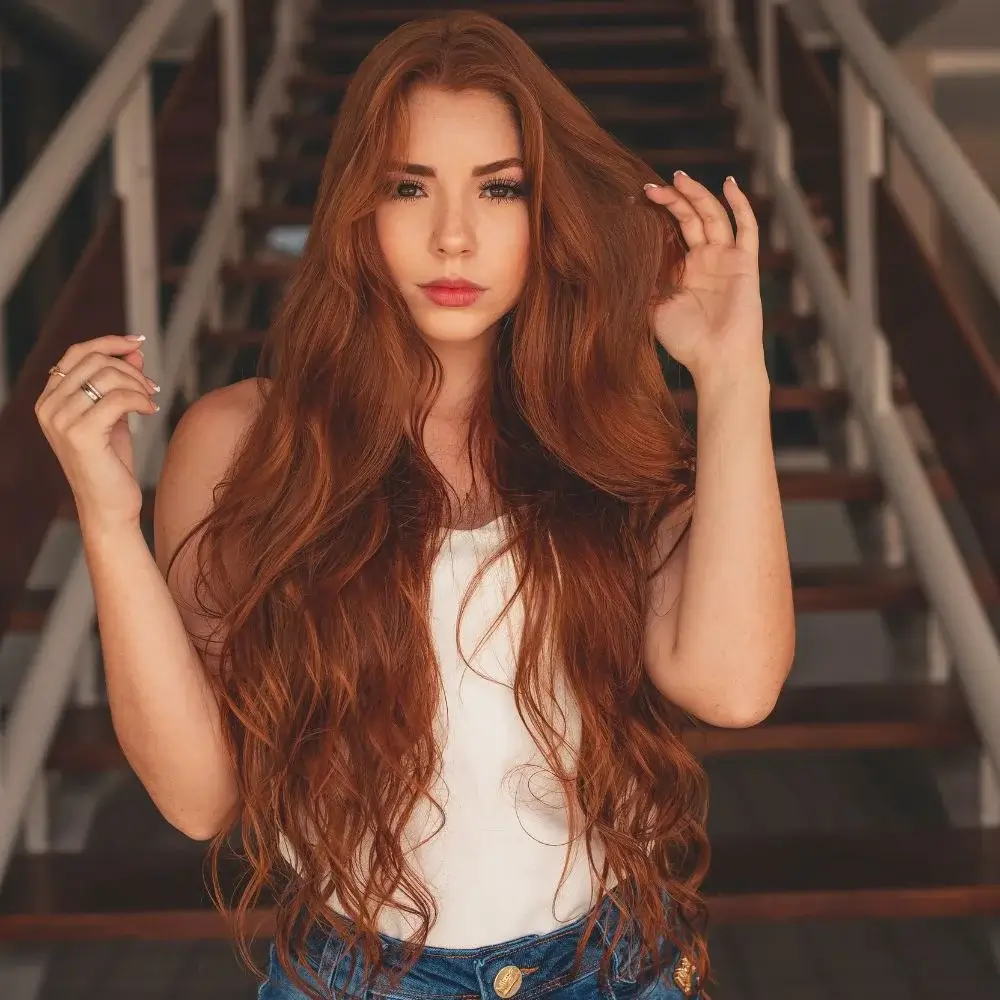Proper hair care is essential for maintaining healthy, beautiful locks. Two key players are at the heart of any hair care routine: shampoo and conditioner. These products work together to cleanse, nourish, and enhance the overall health of your hair. In this blog post, we'll explore the fascinating process of how shampoo and conditioner work on your hair, giving you a better understanding of how to care for your precious tresses.
The Process of Cleaning with Shampoo
Shampooing is the essential first step in any hair care routine. It is crucial in removing dirt, oil, product buildup, and other impurities that accumulate on your scalp and strands. Let's delve into how shampoo works its magic: Shampoo contains surfactants that act as effective detergents, breaking down and lifting away dirt and excess oil from your hair and scalp. As you gently massage the shampoo into your scalp, it creates a luxurious lather that helps to trap and carry away impurities, leaving your hair feeling impeccably clean and revitalized. Shampoo formulations are meticulously crafted to maintain the optimal pH level for your scalp, preventing dryness and irritation and regulating the production of oil, ensuring a healthy balance.
The Role of Conditioners in Hair Care
While shampoo cleanses your hair, the conditioner provides vital nourishment, moisture, and protection, here's how conditioner works its magic:
- Restoring moisture and hydration: Conditioner contains ingredients like humectants and emollients that help to restore moisture and hydration to your hair, combating dryness and frizz.
- Smoothing and detangling: Conditioning agents in the product help to smooth the hair cuticles, making your strands more manageable and easier to comb through, reducing breakage and tangling.
- Nourishing and strengthening: Conditioners often contain proteins, vitamins, and natural oils that nourish and strengthen your hair from within, promoting overall health and vitality.
Understanding Ingredients in Shampoo and Conditioner
Both shampoo and conditioner contain various ingredients that contribute to their effectiveness. Here are some common ingredients and their functions:
- Surfactants: These cleansing agents remove dirt and oil from your hair.
- Humectants: These ingredients attract and retain moisture, helping to hydrate your hair.
- Emollients: They smooth the hair cuticles, resulting in softer and more manageable hair.
- Proteins: They help to repair and strengthen damaged hair.
- Natural Oils: These provide nourishment and add shine to your hair.
Choosing the right products for your specific hair type is crucial. Look for shampoos and conditioners formulated for your hair concerns, such as dryness, damage, or color-treated hair. Experimenting with different products can help you find the perfect match for your hair needs.
Tips for Effective Use
To get the most out of your shampoo and conditioner routine, keep these tips in mind:
- Proper application techniques: Apply shampoo to your scalp and work it into a lather, focusing on massaging your scalp to stimulate blood flow. Apply conditioner to the mid-lengths and ends of your hair, where needed most.
- Frequency of use: How often you should shampoo and condition your hair depends on your hair type and preference. Experiment to find a routine that works best for you, whether daily, every other day, or less frequently.
- Avoiding common mistakes: Rinse your hair thoroughly after shampooing and conditioning to prevent buildup. Use lukewarm water instead of hot water, as excessive heat can strip away moisture from your hair.
Shampoo and conditioner are essential tools in your hair care arsenal, working together to cleanse, nourish, and protect your precious locks. By understanding how they work and choosing the right products for your hair type, you can achieve healthy, luscious hair that shines with vitality. Embrace the benefits of shampoo and conditioner, and let your hair radiate beauty and confidence.
After extensive research and meticulous analysis of numerous options, we are thrilled to unveil our carefully curated selection of top-rated shampoos and conditioners. We deeply understand the significance of discovering the perfect hair care products that cater to your unique needs. Whether you desire hydration, volume, or revitalization, our comprehensive search has led us to the absolute combinations of best shampoo and conditioner available. To explore and embrace your new favorite hair care essentials, simply click on the link below and immerse yourself in a world of unrivaled quality and transformative results.
What factors contribute to a shampoo being labeled as natural?
Shampoos labeled "natural" are distinguished by their commitment to ingredient transparency. Look for formulations enriched with plant-derived components, free from sulfates, parabens, and synthetic fragrances. Credentials from reputable organic organizations ensure further authentication of their natural status. The conscientious use of recyclable packaging aligns these products with a holistic approach, emphasizing hair health and environmental sustainability. Choosing a natural shampoo reflects a conscious consumer choice, prioritizing clean, plant-based ingredients for hair care that are both effective and environmentally responsible.

What is the recommended method for applying a deep conditioning treatment?
Applying a deep conditioning treatment is a multi-step process to maximize its transformative benefits. Begin with freshly cleaned, damp hair as a clean canvas. Apply the treatment evenly, focusing primarily on the mid-lengths to ends, where hair is most prone to dryness and damage. For enhanced penetration, wrap the treated hair in a warm towel or utilize a shower cap. For an extra boost, introduce heat with a hairdryer. This meticulous approach ensures that the deep conditioning treatment saturates the hair, delivering optimal nourishment and repair for a silky, revitalized outcome.

What are the potential drawbacks of using a 2-in-1 shampoo and conditioner?
Despite their convenience, 2-in-1 shampoo and conditioner formulations come with potential drawbacks. Combining cleansing and conditioning agents within a single product often results in a milder formulation, compromising thorough cleansing and deep conditioning. Individuals with specific hair concerns, such as dryness or excessive oiliness, may find dedicated products more effective. Moreover, the uniform application of shampoo and conditioner may not address individualized hair needs, potentially leading to suboptimal results compared to using distinct, specialized products tailored to unique hair requirements.

How should a leave-in conditioner be applied for maximum benefits?
The strategic application of a leave-in conditioner is pivotal for unlocking its maximum benefits. Begin by applying the product sparingly, starting from the ends and working upward. Focus on areas prone to dryness or damage for targeted care. Comb through the hair for even distribution, avoiding the scalp to prevent product buildup. Adjust the quantity based on hair length and thickness. Follow with styling immediately. This meticulous approach ensures that the leave-in conditioner provides continuous nourishment, enhances manageability, and forms a protective barrier, contributing to improved overall hair health, reduced frizz, and sustained hydration.

How should a person with colored hair adjust their shampoo routine?
Effectively caring for colored hair demands a nuanced shampoo routine. Opt for sulfate-free, color-safe formulations to prevent premature color fading. Adjust washing frequency, opting for less frequent washes to preserve the vibrancy of color-treated hair. Use cool water during washing to minimize color leaching. Integrate regular deep conditioning treatments into the routine to restore moisture and maintain color brilliance. Consider including a UV-protective product to shield against potential sun-induced color damage. This tailored approach ensures that colored hair retains its vibrancy and gloss and enjoys prolonged color retention, addressing the unique needs arising from chemical treatments.







